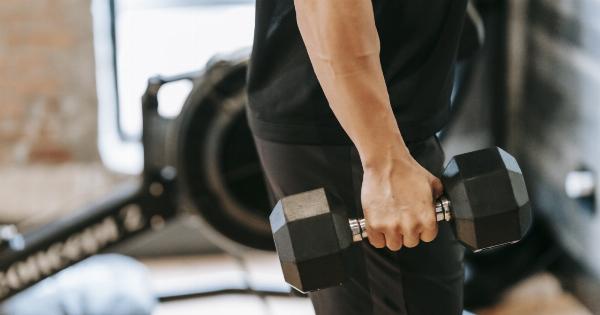When it comes to male bodies, there are numerous misconceptions that have been perpetuated over the years. These misconceptions can lead to insecurities and unrealistic expectations for men.
In this article, we will debunk some of the most common male body misconceptions and shed light on the truth behind them.
1. All men have six-pack abs
One of the biggest misconceptions about male bodies is that all men have or should have six-pack abs. While it’s true that having a well-defined abdominal area is seen as attractive by many, it’s not a realistic expectation for every man.
The visibility of abs depends on various factors such as body fat percentage, genetics, and muscle development.
2. Tall men are more masculine
The idea that taller men are more masculine is purely a societal construct. While height is often associated with dominance and strength, it doesn’t determine a man’s level of masculinity.
Masculinity is a complex concept that encompasses a range of qualities and characteristics beyond just physical stature.
3. Muscles equate to strength and virility
While having well-developed muscles can be a sign of physical strength, it does not necessarily determine an individual’s overall strength or virility.
Strength comes in many forms, including mental and emotional resilience, which cannot be solely judged based on external appearance. Additionally, it’s important to recognize that everyone’s body is different, and not all men have the same capacity for muscle growth.
4. Baldness indicates aging and lack of attractiveness
Baldness is a natural part of many men’s lives and can occur at any age. However, the belief that baldness automatically signifies aging or makes a man less attractive is unfounded.
Many men embrace their baldness and exude confidence, which can be far more appealing than any specific hairstyle.
5. All men should have a large penis
The size of a man’s penis has long been a subject of fascination and insecurity. However, it’s important to understand that penis size varies greatly among individuals, and there is no one-size-fits-all standard.
Sexual satisfaction and intimacy rely on various factors beyond penis size, such as emotional connection and communication.
6. Men don’t face body image issues
Contrary to popular belief, men do experience body image issues and insecurities. Society often places a heavy emphasis on physical appearance, leading men to compare themselves to unrealistic ideals.
It’s essential to acknowledge that body image concerns can affect individuals of all genders.
7. Men should always have high testosterone levels
While testosterone is often associated with masculinity, it doesn’t mean that all men should always have high levels of this hormone.
Testosterone levels can vary throughout a man’s life and can be influenced by various factors such as age, lifestyle, and underlying health conditions. It’s important to focus on overall well-being rather than hyper-focusing on one hormone.
8. Men don’t struggle with body weight
Weight issues are not exclusive to women. Men also face challenges related to body weight, including body fat percentage, building muscle mass, and maintaining a healthy lifestyle.
It’s important to promote body positivity and support individuals in their journey towards a balanced and healthy body, regardless of gender.
9. All men have high metabolism
Metabolism varies among individuals, and not all men naturally have a high metabolic rate. Factors such as genetics, age, muscle mass, and activity levels play a significant role in determining a person’s metabolism.
It’s crucial to focus on overall health and adopting sustainable habits rather than solely fixating on metabolism.
10. Men don’t care about skincare
Skincare is not exclusive to women. Men also face skin-related concerns and can benefit from a proper skincare routine. Factors such as exposure to environmental pollutants, UV rays, and aging can affect a man’s skin.
A simple skincare routine that includes cleansing, moisturizing, and sun protection can go a long way in maintaining healthy and youthful skin.
Conclusion
It’s important to challenge and debunk the misconceptions surrounding male bodies. Men come in all shapes, sizes, and forms, and it’s crucial to embrace and celebrate diversity.
By understanding the truth behind these common male body misconceptions, we can create a more inclusive and supportive environment for men to feel comfortable and confident in their own skin.


























